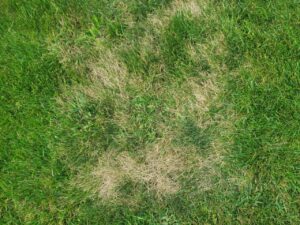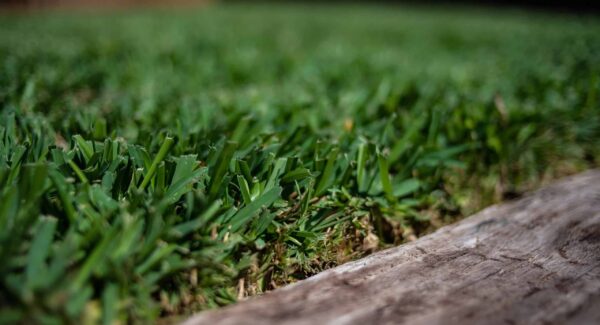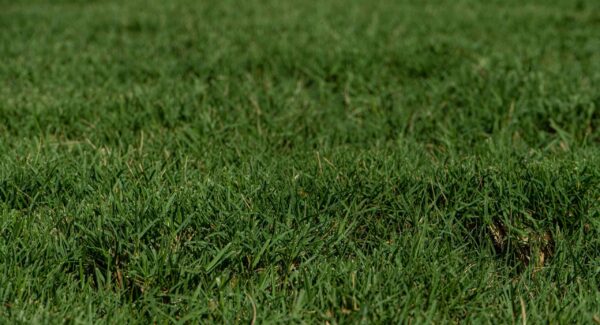Identifying Summer Lawn Diseases

Lawn diseases can strike your yard at any time, but the extreme heat, scarce rainfall, and humidity of summer create the perfect breeding ground for fungal lawn diseases. Most lawns are hit with some sort of disease or rotted patch at some point. If your lawn is stricken with red or brown patches, it’s likely that the culprit is one of the several common summer lawn diseases listed below. Identifying the lawn disease you’re dealing with is essential to figuring out what the best plan of action is for treatment.
Common Summer Lawn Diseases Include:
Summer Patch
We’ve all seen summer patch before, whether it’s on our own lawn or a neighbor’s. Summer patch forms on your grass in brownish-yellow circles or rings, often on lawns that are very sunny or hot. It can begin as a small crescent shaped cluster and then swiftly destroy your entire lawn, rotting the grass down to the soil. The disease begins rotting the roots of your grass in early May but you typically won’t see the external symptoms of the fungus until June or July, so prevention is key. A consistent watering schedule keeps the grass from becoming dehydrated. Being mindful to not over-fertilize your lawn can also safeguard your grass from summer patch. If your grass is already infected, you can apply a fungicide and follow the prevention guidelines to keep grass healthy in the future.
Brown Patch
Brown patch can be very destructive to turf grasses. It looks somewhat similar to summer patch once it has rotted away the grass, but in the beginning it has the appearance of “water stains” on your lawn: greenish-purple patches with a darker ring around them, often in large clusters. Brown patch likes to attack during humid, moist weather so it’s most often found in summer. All types of lawns can be affected, but brown patch is often seen in St. Augustine grass. However, it is common and not too difficult to treat. To both prevent and heal instances of brown patch, water grass early in the morning and allow the blades to dry out during the day. Avoid over watering, over fertilizing, and mowing grass too short. Aerating your lawn once a year is a solid preventative technique for brown patch as well.
Dollar Spot Disease
Aptly named, dollar spot disease refers to the small, silver dollar sized circles of tan grass that appear on your lawn. They don’t look very threatening when they appear individually or intermittently throughout the yard, but they can wreak serious havoc if they expand and rot all your grass. If this happens, you might need to reseed your lawn, so addressing the issue as soon as you see a spot is recommended. Dollar spots normally appear on yards with low moisture and fertility, so if your grass is dehydrated or not consistently mowed it may be vulnerable. Treatment for this disease varies depending on its severity. Properly fertilizing and irrigating your lawn can help it heal, but in some cases a fungicide is necessary. If you’re unsure what level of care is needed, you can call a professional for advice.
Red Thread
Red thread is typically pretty easy to identify. It causes pink or red thread-like blades to extend from the top of your grass, appearing in irregular circular patches around your lawn. This disease often develops in the cool but humid months of spring and can be full blown by summertime. It preys on longer grass that gets covered in dew during humid evenings, so you end up seeing it a lot on residential lawns. Luckily, treating red thread usually doesn’t require any sort of fungicide and can be troubleshooting through simply changing your lawn maintenance techniques. Deep and infrequent watering is recommended so that excess moisture doesn’t build up. In addition, properly fertilizing your lawn can help it quickly recover from red grass and make it more resistant to disease going forward.
If you have questions about treating common lawn diseases or keeping your Texas lawn healthy, contact The Grass Outlet today for more information.





